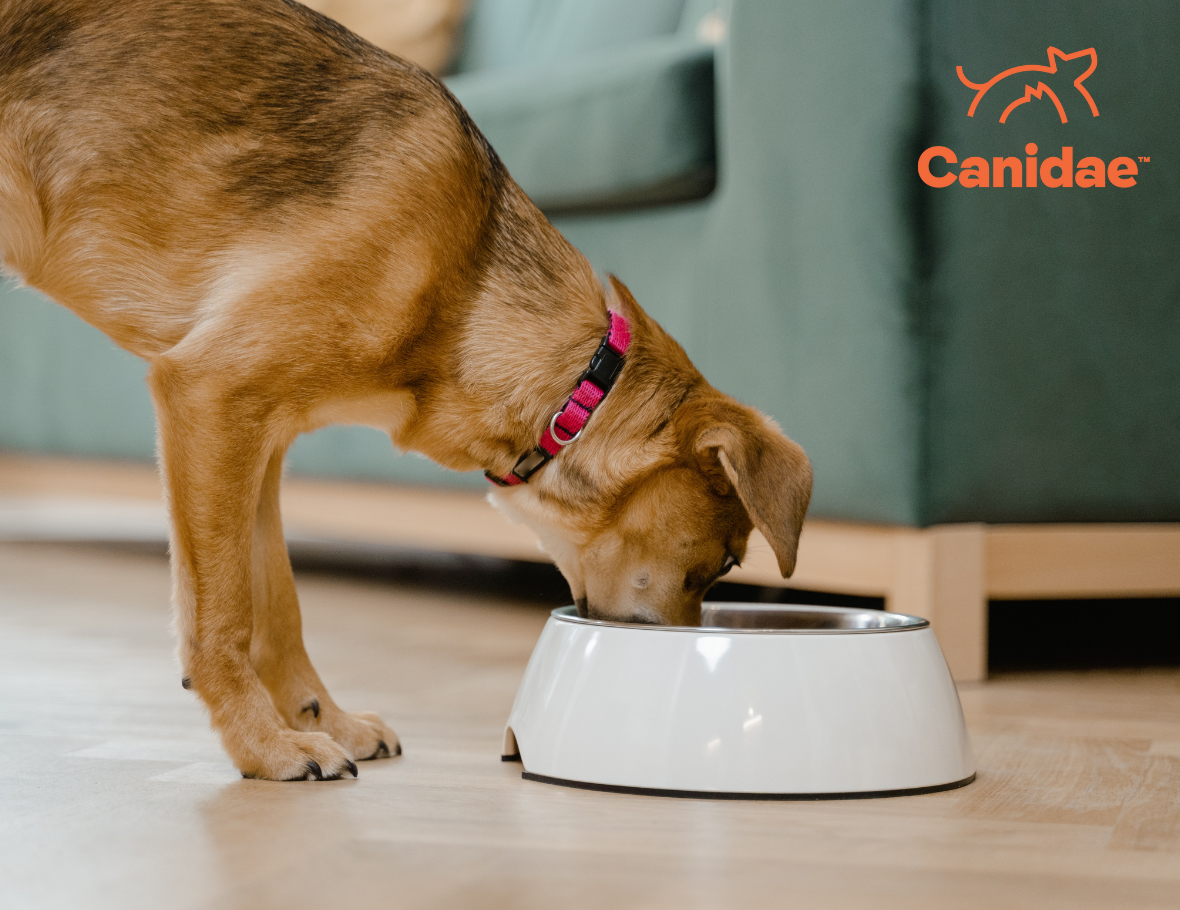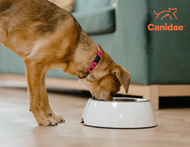A Raw Food Diet for Dogs? We Look at the Evidence

Picture this: a pack of wild dogs is gathered around a campfire adding seasoning to a recently caught rabbit. Two scruffy hounds fight over the amount of salt before the alpha of the group puts his apron on and takes charge.
Advocates for a raw food diet for dogs say the fact we feed our dogs with cooked and processed food — when their ancestors wouldn’t have been able to eat anything like it — is just as crazy as the idea of dog chefs.
But are pooches who eat processed food really getting a raw deal? Join us as we look at both sides of the debate and sort facts from fiction.
What Is a Raw Food Diet?
A raw food diet for dogs is pretty self-explanatory. It mainly consists of raw meat (traditional cuts and occasionally organs such as liver) and whole or ground bones. It may also contain raw eggs, dairy products such as yogurt, or fruit and vegetables.
Is a Raw Food Diet Good for Dogs?
With both sides of this debate trying to bark louder than the other, we cut through the noise by looking at some of their key points.
The Case for a Raw Food Diet for Dogs
Supporters claim the benefits of a raw food diet for dogs include higher energy levels, healthier skin, cleaner teeth and shinier coats.
It’s worth pointing out that there is no conclusive scientific evidence for any of this. A shinier coat may be the result of a higher composition of fat in the average raw food diet, but a diet that is high in fat may suffer from not being balanced. Critics of raw food diets point to commercial dog foods with omega 6 and omega 3 fatty acids as a proven way to care for your dog’s skin and coat.
Those in favor of a raw food diet for dogs sometimes point to a 2016 study that found they could promote a more balanced microbiome and “healthy gut functions.” While the conclusions drawn do support the viability of a raw food diet, it is worth noting this was a very small study that only involved eight dogs, and that the long-term health of the dogs wasn’t monitored.
The Case Against a Raw Food Diet for Dogs
One of the main criticisms aimed at raw diets is that they are often unbalanced. An evaluation of five raw food diets found low levels of calcium and phosphorus in three of the diets and a deficiency of potassium, magnesium and zinc in two. Plus, vitamin D levels were too high in two of the diets.
Feeding your dog an unbalanced diet for an extended period is likely to cause serious health issues down the line. If your dog doesn’t receive a sufficient amount of calcium and phosphorus this could provoke bone and dental problems. If you don’t feed her enough fat, her coat may suffer, but if you feed her too much fat (and not enough protein), this could cause mild anemia. Getting the balance wrong can also result in weight gain, and there are many risks associated with obesity in dogs.
Preparing a healthy balance of meats, vegetables and other raw ingredients can be very time-consuming, and with rising ingredient prices, the cost of a raw food diet can also be prohibitive for pet parents. Cheaper meat has often been fed antibiotics, which can result in antibiotic-resistant bacteria.
One of the main criticisms of raw food diets is that raw meat can contain harmful bacteria, such as salmonella and E. coli. These nasty bugs can make your dog seriously sick and can also be picked up by humans. The elderly, young kids and anyone on immunosuppressive medication are particularly at risk. If you do decide to feed your dog raw meat, be sure to wash your hands thoroughly after, and disinfect any surfaces the meat may have touched.
Raw food advocates may argue that commercially processed pet foods can also contain harmful bacteria. While this is true, it’s worth looking at the data. In one study salmonella was found in 6% of raw food diets, with none found in conventional diets. In the same study, E. coli was found in almost 50% of raw food diets, but in only 8% of canned diets.
Dog owners often feed their pets bones as part of a raw food diet, but they should be aware of the dangers. Eating animal bones can cause choking, broken teeth or even punctured internal organs.
We always recommend speaking to your vet before changing your dog’s diet, period. If you're considering changing your dog to a raw food diet, it's also worth taking into account what the American Veterinary Medical Association (AVMA) has to say on the topic. While they don’t outright call a raw diet unhealthy, they point to potential health risks and discourage pet owners from feeding dogs and cats raw meat.
Freeze-Dried Raw Dog Food
Freeze-dried dog food is typically prepared by chopping and blending ingredients together before placing the mixture in a freeze dryer. Freeze drying is complicated but essentially dehydrates the food by drawing all of the moisture out.
The process of freeze drying has some advantages: it increases the shelf life of raw food but allows it to maintain its quality and nutrients. Advocates of a raw food diet may tell you about bioavailability. Bioavailability refers to how much of a nutrient is properly absorbed and used by the body when it is consumed. If a food is processed at high temperatures it can make the proteins degrade and become less digestible, which consequently makes it less bioavailable. Freeze drying results in more bioavailability by maintaining the protein structure and making sure nutrient quality is retained.
Another advantage of freeze drying is that it kills a percentage of bacteria which makes freeze-dried raw food safer than traditional raw food.
What Food Should I Feed My Dog?
If you are insistent on feeding your dog a raw food diet, it’s essential to consult a veterinary nutritionist. They will be able to better advise you on what foods you need to feed your dog to reach key nutritional targets, and will also be able to tell you if there’s any reason your dog shouldn’t be on such a diet.
The Association of American Feed Control Officials (AAFCO) defines regulations for the pet food industry and sets standards for nutritional levels. Canidae® works with a team of pet food experts to not only meet the minimum AAFCO standards but to exceed them as much as possible. We believe your dog deserves to eat high-quality food that is expertly crafted.
With our Chicken & Brown Rice and Beef, Barley & Quinoa PURE 3-in-1 Goodness Freeze-Dried Raw bites, you get what you see. These delicious chunks can be mixed with kibble, used as a topper, or given as a special treat. What’s more, they undergo HPP (High-Pressure Pasteurization) — a highly effective, chemical-free method for removing harmful bacteria. PURE 3-in-1 Goodness Freeze-Dried Raw is suitable for dogs of all life stages. To learn more about freeze-dried goodness, check out this blog.
We never forget about the little guy, which is why we’ve got the Pure Petite line. These grain-free, limited-ingredient recipes benefit from a freeze-dried raw coating that will have your dog begging for more! With a smaller kibble size designed just for your mini-bestie and more nutrients per cup than other leading brands, small dog owners can’t go wrong with Pure Petite.
Take our quiz to figure out which food is best for your dog and think about transitioning your dog to Canidae today!

